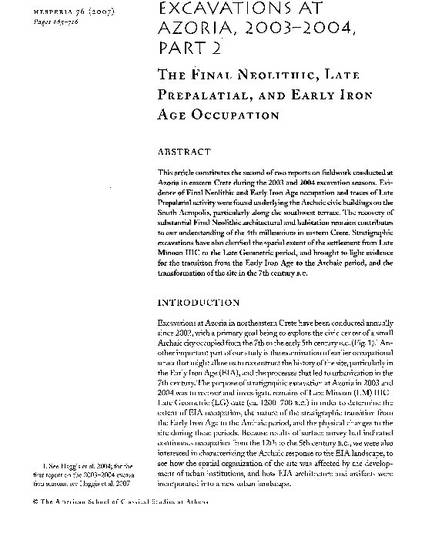
his article constitutes the second of two reports on fieldwork conducted at Azoria in eastern Crete during the 2003 and 2004 excavation seasons. Evi dence of Final Neolithic and Early Iron Age occupation and traces of Late Prepalatial activity were found underlying the Archaic civic buildings on the South Acropolis, particularly along the southwest terrace. The recovery of substantial Final Neolithic architectural and habitation remains contributes to our understanding of the 4th millennium in eastern Crete. Stratigraphie excavations have also clarified the spatial extent of the settlement from Late Minoan IIIC to the Late Geometric period, and brought to light evidence for the transition from the Early Iron Age to the Archaic period, and the transformation of the site in the 7th century B.c.
Available at: http://works.bepress.com/margaret_mook/2/

This article is from Hesperia 6 (2007): 665–716. Posted with permission.